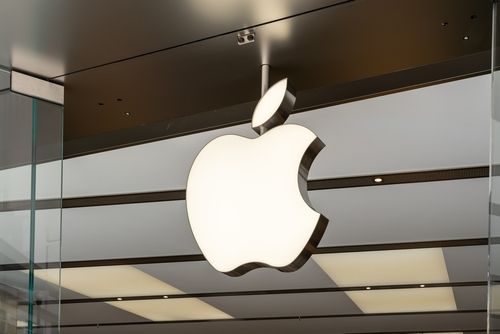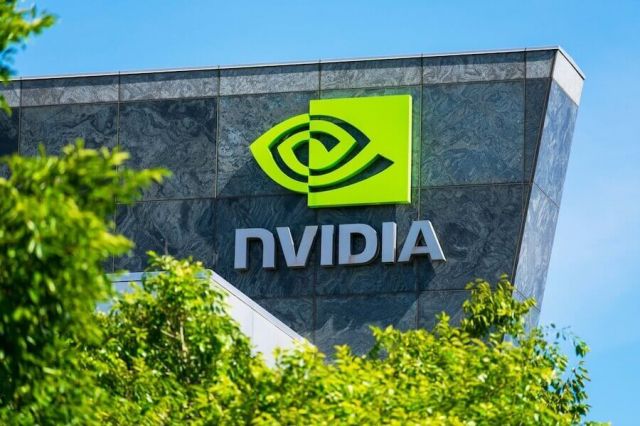How to trade Apple stocks

Enhance your knowledge of Apple with information about the company’s history, stock splits, Apple stock trading hours and how to trade Apple shares via CFDs with Capital.com.
What is Apple?
Apple is a multinational technology company founded by Steve Jobs, Steve Wozniak and Ronald Wayne in 1976 as ‘Apple Computers Inc’. Originally Apple’s focus was to build user-friendly computers for home and office users, with its first products, the Apple and the Apple II, establishing the company as a pioneer in the growing computer industry.
Dropping the ‘computers’ part of its name in 2007 with the launch of the iPhone, Apple has emerged as a market-leading designer, manufacturer, developer and retailer of hardware products, software and services.
Apple has had five stock splits since becoming a publicly traded company in 1987, 2009, 2005, 2014, and 2020, making its shares more affordable and accessible to the general public.
What is Apple’s share price history?
Apple’s share price has a history of overall growth, with some notable periods of decline in the 1990s, and more recently in 2013, 2016, and 2019.
In 1980, Apple listed on the Nasdaq Stock Market under the ticker symbol AAPL. It set the record as the most successful IPO since Ford in 1956 after selling 46 million shares priced at $22 each, netting a total of $100 million.
Investor sentiment in Apple faltered in the mid-1980s to late-1990s during increased competition from its largest rival Microsoft, low-selling and poorly-received product launches like the Macintosh LC, and the absence of capable leadership following the company’s decision to remove the CEO role from its founder Steve Jobs.
After Jobs returned as CEO in 1997, Apple began to regain investor confidence and share price momentum. The company share price grew with the success of highly received products and services ranging from the iMac (1998) and Mac OS X (2001), to the iPod (2001), and more recently the iPhone (2007) and App Store (2008).
In August 2018, Apple made trading history again when it became the first company in the world to reach a $1trn market capitalisation.
Apple is a high liquidity share with a history of growth, but even high-performing companies are susceptible to both increases and decreases in value. In April 2013, Apple shares had fallen by 26% from the start of the year. Apple’s share price decline in 2016 coincided with poor iPhone sales and failure to meet revenue targets that year. Apple’s share price fell again in 2019 as a result of the global Covid-19 pandemic as well as related supply chain and manufacturing issues.
Today, Apple (AAPL) is considered part of the ‘FAANG’ group of US technology stocks & 'Magnificent 7 stocks' recognised as industry performance indicators due to their size and influence in the market. FAANG is an acronym made of the names of its members: Meta (previously named Facebook); Amazon; Apple; Netflix; and Alphabet (previously named Google).
(Past performance is not a reliable indicator of future results)
What factors might affect the Apple live share price?
Apple’s share price can be impacted by a range of key sector-specific fundamental events. Here are a few of the main factors that traders should watch out for.
Sales performance/market expectations
As a widely speculated stock, Apple’s share price can be heavily influenced by how its sales performance compares with market expectations. If the company passes these expectations, there may be an uptick in buying. Conversely, a failure to meet these targets could result in a sell-off. Some traders choose to follow key events like quarterly earnings reports to track performance.
Supply chain and production
Some 81% of Apple’s revenue was generated from hardware sales in Q1 2023. Issues affecting the supply chain, such as resource shortages and labour disputes, may delay Apple’s capability to manufacture and stock products to meet consumer demand, impacting the company's revenue.
New product launches
Investor sentiment can hinge on how the market responds to annual product launches for Apple’s major brands like the iPhone and iMac. Pre-release anticipation and post-launch reception can cause share prices to increase or decrease.
Services and subscriptions
Apple’s growing services segment earned over 26% of the company’s total revenue for Q2 2024. Services such as Apple Music, Apple TV, Apple Pay and the App Store tap into Apple’s huge userbase. Innovation and improvements to such services can help the company expand its market share and stock price in these competitive areas.
What are the Apple trading hours?
Apple’s stock market trading hours are Monday to Friday from 2:30pm to 9:00pm (UK time), equating to 1:30pm to 8:00pm UTC.
If you choose to trade CFDs, you can follow the Apple stock performance live in US dollars with the comprehensive Apple share price chart.
Monitoring the company’s activity can help you to keep an eye out for any key fundamental or technical events that may affect short-term movements in the share value.
How to trade Apple stock with CFDs
If you want to take a position on Apple shares, you have two options. First, you can buy physical shares in the company through the exchange on which it’s listed. In this case, investing in Apple stocks means you will own a share, or shares, in the company. This can be considered a long-term investment, as you’re hoping for the price to rise over time.
Alternatively, you can trade a derivative product such as a contract for difference (CFD) on the underlying Apple stock market price, and speculate on its price movements without actually owning the asset. A CFD is a financial contract, typically between a broker and a trader, where one party agrees to pay the other the difference in the value of a security, between the opening and closing of the trade.
Unlike physical share ownership, you can either hold a long position (speculating that the price will rise) or a short position (speculating that the price will fall). This is considered a short-term investment or trade, as CFDs tend to be used within shorter timeframes.
Another key difference between buying physical Apple shares and trading through a derivative is the leverage that can be employed with the latter. CFDs are traded on margin, which means that a trader can get exposure to larger positions with a relatively small outlay. In this scenario, both your profits and losses are amplified, making such trading risky. You can learn how to trade shares in our comprehensive guide to shares trading.
To trade Apple stock CFDs with us, just sign up for a Capital.com account, and once you’re verified, you can use our advanced web platform or download our intuitive yet easy-to-use app. It’ll take just a few minutes to get started and access the world’s most-traded markets.
Need more support? Try our step-by-step stocks course to guide you through the basics to the advanced concepts.
Why trade Apple CFDs with Capital.com
Trading Apple CFDs with Capital.com means you’ll enjoy an intuitive, supremely easy-to-use platform, 24/7 support, fair and transparent pricing, along with award-winning education to help build your experience in the markets.* You can seamlessly integrate our smart platform with elite third-party software TradingView and MT4, and refine your strategies with our risk-free demo account.
*Awarded best-in-class for education at ForexBrokers.com’s 2024 Annual Awards
FAQs
Who owns Apple?
Apple does not have any majority shareholders. The largest institutional shareholders in Apple as of 2024 are Vanguard Group (8.6%), BlackRock (6.8%), and Berkshire Hathaway (5.15%). Significant individual shareholders as of early 2024 include Apple’s Independent Chairman Arthur D. Levinson, and Apple CEO Tim Cook.
How much is Apple stock trading at?
As with any asset, the Apple share price is dynamic and liable to change at any time. If you’re trading this stock, it’s important to check out the Apple chart frequently to keep on top of price movements, as well as retain a strong understanding of the fundamental and technical influences that can cause the price to shift.
What market is Apple listed on?
Apple has been listed on the Nasdaq Stock Market since its IPO in 1980.
How to trade Apple shares
To invest in Apple, you could buy and own the physical share, for example through a stockbroker, at a price you think you can profit on in time. The alternative method is to trade a derivative such as CFDs, which can give you leveraged exposure to the underlying price without ownership. Consider that leveraged trading is risky, with the potential to amplify both profits and losses.
You can also access Apple shares indirectly as part of a diversification strategy by trading indices that the stock is commonly featured in such as the US Tech 100.
Is Apple a good stock to buy right now?
Whether Apple is a good stock to buy is dependent on market conditions as well as macroeconomic indicators affecting the supply and demand. On a technical level, you might consider technical indicators such as the RSI or MACD to identify potential support and resistance. From a fundamental standpoint, a knowledge of the standing of competitors, earnings release timings, product developments, consumer sentiment, and the regulatory landscape are all valuable considerations when determining your trading strategy.
Visit our other complete guides

How to trade Nvidia
